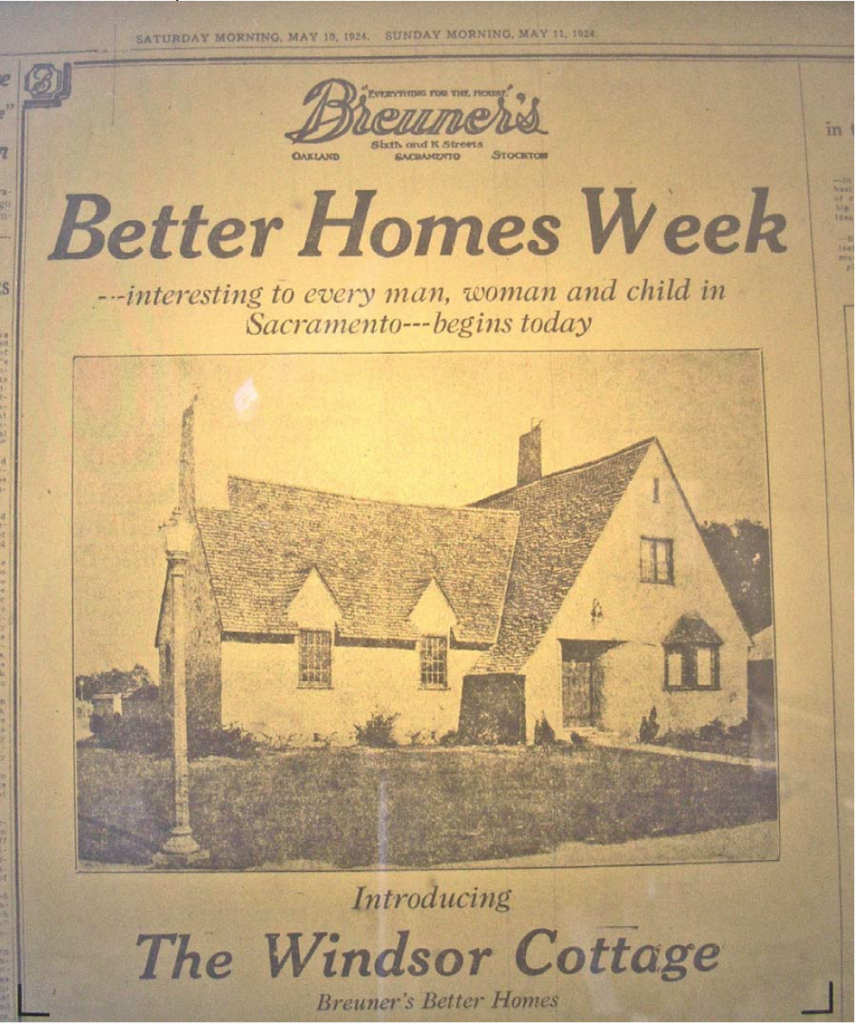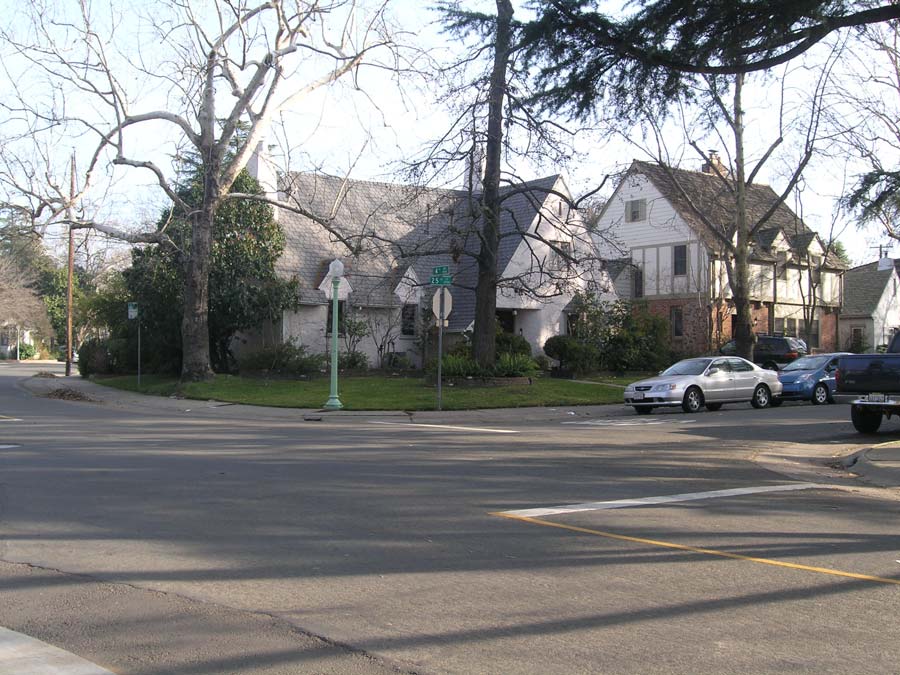Tudor Revival, English Cottage, Half-Timbered, Picturesque, Cotswold. There are a lot of different terms for the beautiful Period Revival houses designed to evoke medieval and post-medieval English building techniques and architectural vocabulary. Each term has a different meaning but for the sake of simplicity, let’s just use the term “English Period Revival” for now. Together with other Period Revival styles (Spanish, Mediterranean, Monterey Colonial, Mission, American Colonial, and Norman, to name a few), the English Period Revival was a very popular architectural idiom in the 1920’s and early 1930’s all across the United States. This article will identify the main features of this style and provide some examples of it in our neighborhood.
The style is loosely based on the traditional medieval English (actually medieval Northern European) building method: half-timber structural framing with wattle-and daub infill and a thatched roof. Historically, the half-timber framing was made of large oak beams; “wattle” refers to reeds and sticks tied together to create a framework between the beams, much like modern lathe; while “daub” is mud or clay with straw, the structural equivalent of plaster or modern stucco that was applied over the wattle. Traditional medieval roofs were thatched with reeds. Windows, if any, were small and consisted of small pieces of glass leaded together. Later, in the post-medieval period, brick and stone were used structurally in addition to or instead of half-timbers, and fireplaces with multiple and highly decorated chimneys were common. The “Tudor arch”, a shallow pointed arch, and elaborate use of brickwork and stonework are hallmarks of that later period.
What are the characteristics of the English Period Revival style in American domestic architecture? English Period Revival exteriors usually have decorative half-timbers with stucco between, often with brick on the first story. The actual structure of the house is wooden balloon framing; bricks and stucco are the cladding and the “half-timbers” are applied ornamentation. Often there is a “meandering” break between the brickwork and the stucco that is meant to suggest picturesque crumbling of antique buildings. Also typical are steep multiple gable roofs, a gable is a triangle formed by a sloping roof. The roof is often clad in shingles or shakes, sometimes made to wrap around the eaves to imitate thatch. There are prominent massive chimneys, sometimes topped with decorative chimney pots. The windows are tall and narrow; often featuring leaded glass. They are usually casement, oriel or bay windows, though some are as well as double hung wooden windows. Entrances are often projecting under their own steep gable roofs and feature a heavy wooden door with wrought iron hinges and hardware and a round or Tudor arch.
The term “Tudor Revival” refers to houses with a predominantly brick exterior; tall and narrow leaded glass casement windows with diamond-shaped glass; multiple chimneys. These houses are usually two-story, possibly with half-timbering on the second story; sometimes with all or part of the second story projecting out from the first story. This style gained popularity in America during the late 19th Century as large country or suburban architect-designed homes. They are more formal than the other “English” styles and intend to evoke English manor houses, although many architectural historians group large and small “English style” designs under the general category of “Tudor Revival”.
“English Cottage” means a one or two story house with a prominent, steep, cross-gabled roof; brick or stucco exterior usually with applied half-timber decoration; and leaded glass or multi-light windows. These houses are meant to resemble small, rural, vernacular dwellings. Many of the tract houses in Curtis Park can be considered English Cottages.
One of the key elements of the English Period Revival style is its asymmetrical façade and massing of the building’s components. This asymmetry inherent in the style reflects the historical precedents of the style: medieval and post-medieval rural houses which were not “designed” per se and which would have been added to incrementally as the need arose. In 20th Century practice, an asymmetrical façade allows the style to be used more easily with modern floorplans, unlike, for example, an American Colonial (Georgian or Federal style) house or a Greek Revival house (think classic Antebellum Southern Plantation) where the symmetry of the façade (placement of doors and windows) dictates the interior space to a large degree.
The designs of these houses were intended to reinterpret historical architectural idioms onto thoroughly modern house forms. In the 1920’s, functional floorplans suitable for modern living, common in bungalows of previous decades, were still being employed, but with a different exterior and interior details. In the smaller homes especially, the Period Revival style elements were often applied primarily to the exterior details, roof design, and the window and door treatment. Show piece houses, however, were often thoroughly “period” inside and out, including the hardware, light fixtures, cabinetry, fireplace surrounds and other details.
The interiors of English Period Revival houses often feature dark stained oak paneling with linen-fold carving; recessed cupboards or bookcases; fireplaces with stone or terracotta surrounds and heavy timber mantels; recessed window seats, beamed ceilings, and sometimes brick or stone floors. Even in smaller homes, libraries are common amenities. Interior hardware is usually wrought iron and has a medieval reference.
English Period Revival style houses were very popular choices in the Curtis Park tracts: South Curtis Oaks, Heilbron Oaks, and St. Francis Oaks. There are beautiful examples of the style in South Curtis Oaks; many of the large houses east of Curtis Park exhibit the style and in houses west of the park aspects of the English style predominate. A large percentage of the houses in Heilbron Oaks, centered on 25th and 26th Streets, exhibit characteristics of the English style and some are exquisite examples of it in this subdivision. There are entire streets in Heilbron Oaks where all the houses represent the English style. St. Francis Oaks, from Markham Way north to 2nd Avenue, features a majority of English style homes along with some lovely representations of the Norman Revival style and Spanish Revival style as well. These houses, some designed and built by Frank Williams, exhibit a mastery of the style and attention to design detail.
Small or large, simple or over-the-top, these homes are treasures that help make Curtis Park the unique, beautiful, priceless neighborhood we cherish.
For further information, see:
- Goff, Lee. Tudor Style: Tudor Revival Houses in America from 1890 to the Present.
New York: Random House, 2002. - Loizeaux’s Plan Book No. 7: Classic Houses of the Twenties. (Reproduction of the Loizeaux Lumber Company plan book, 1927). Mineola, New York: Dover, 1993.
- Massey, James C. and Shirley Maxwell. House Styles in America. New York: Penguin Studio, 1996.
- McAlester, Virginia and Lee McAlester. A Field Guide to American Houses. New York: Alfred A. Knopf, 1984.
- Rogers and Manson. 100 Turn of the Century Brick Bungalows with Floor Plans. (Reproduction of The Building Brick Association of America by Rogers and Manson, 1912). Mineola , New York: Dover, 1994.
By Denise O’Connor
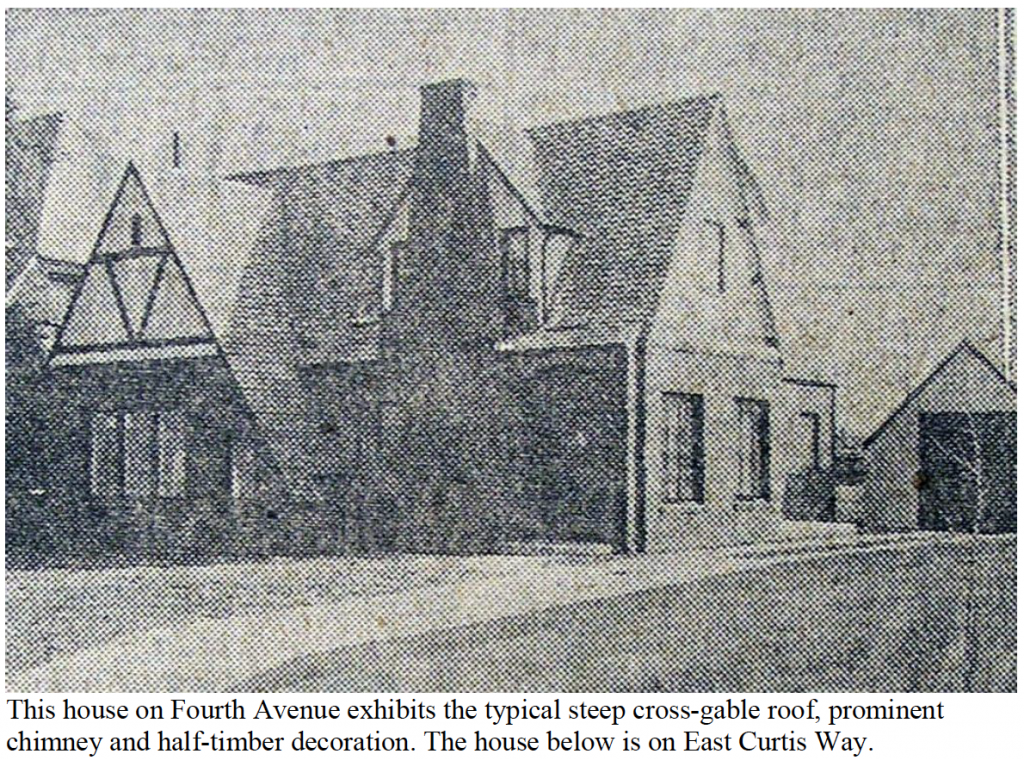
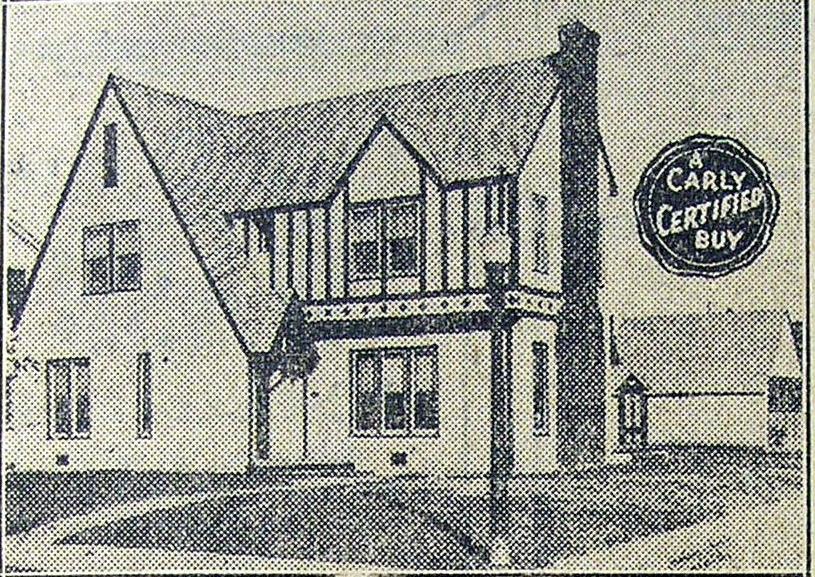
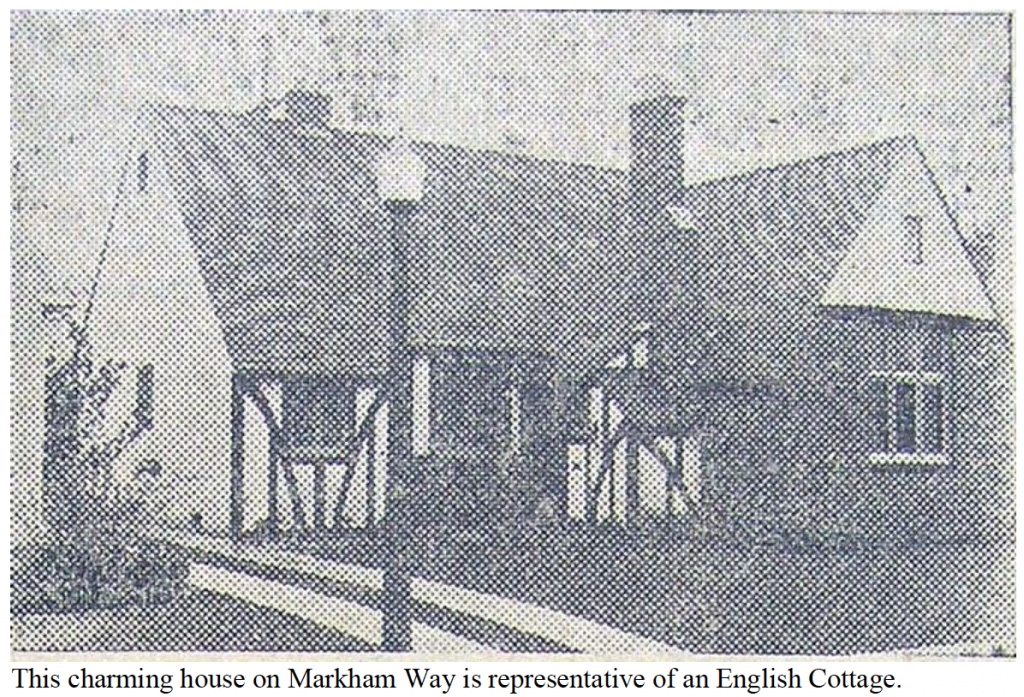
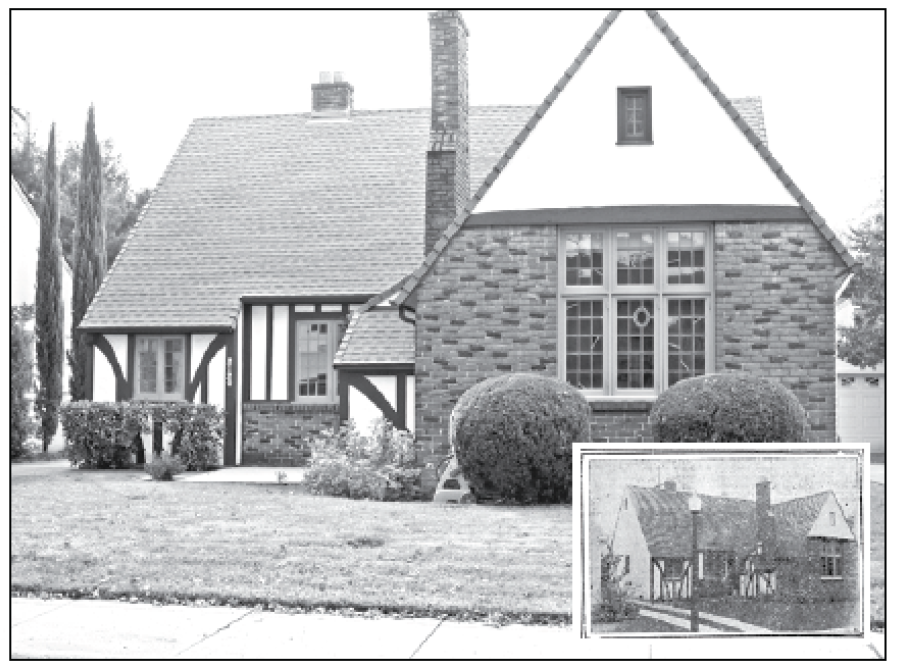

Better Homes Demonstration contest in 1923. The roof, with its “eyebrow” dormers, was
designed to imitate thatch. It was featured in the Curtis Parks Home and Garden Tour
in 2009.
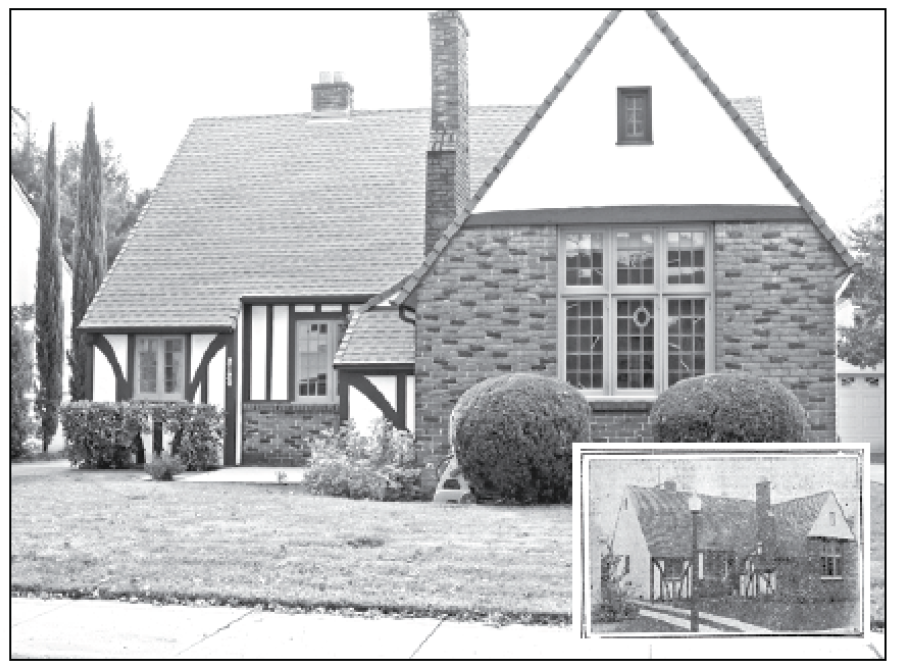
The following are some newspaper articles on a 1924 Better Homes contest house in Heilbron Oaks that is Tudor Revival Style.
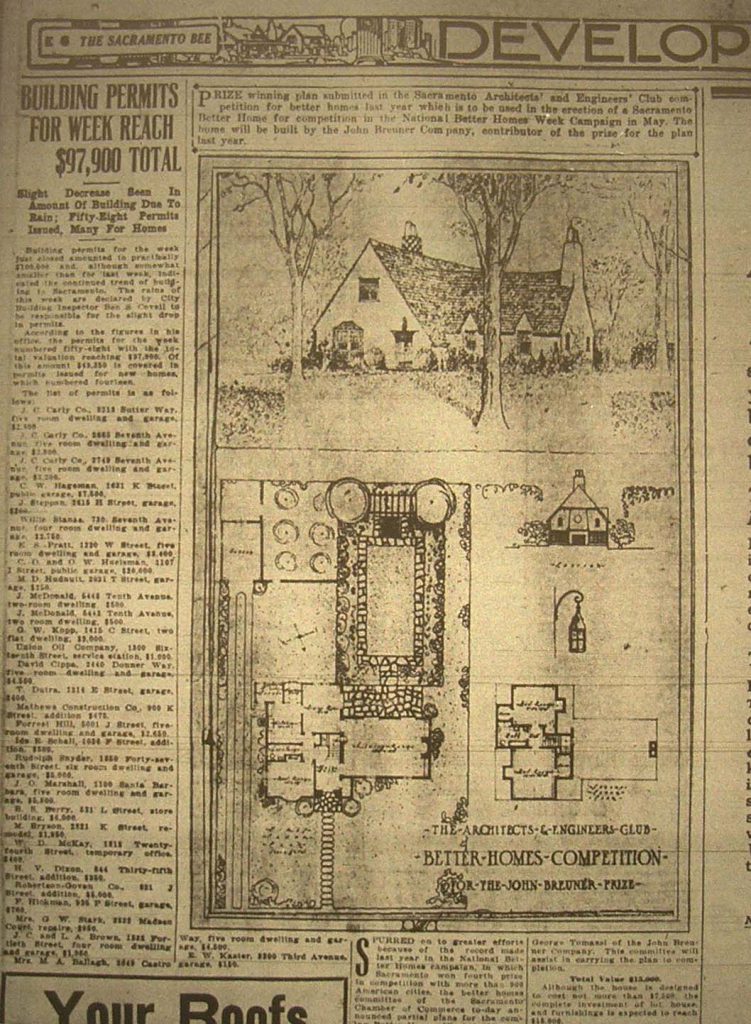
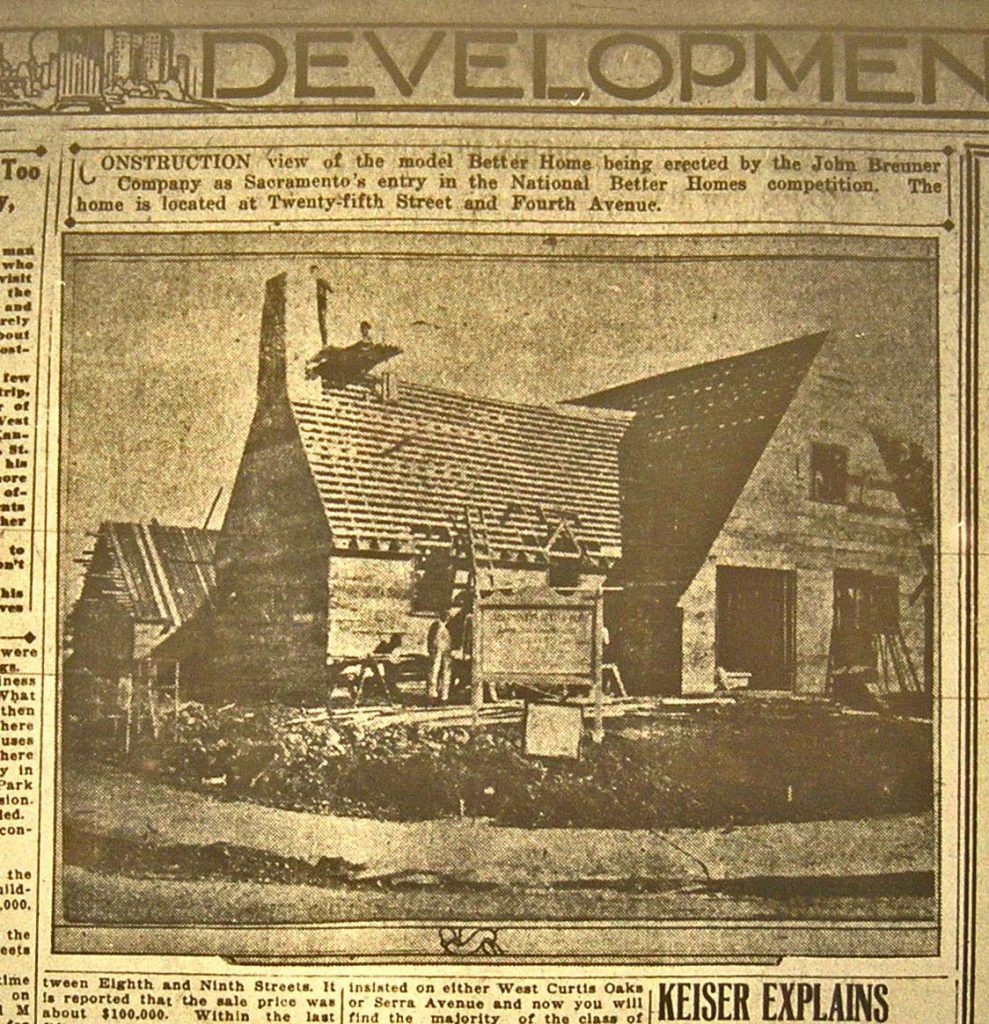
Here is the finished product.
